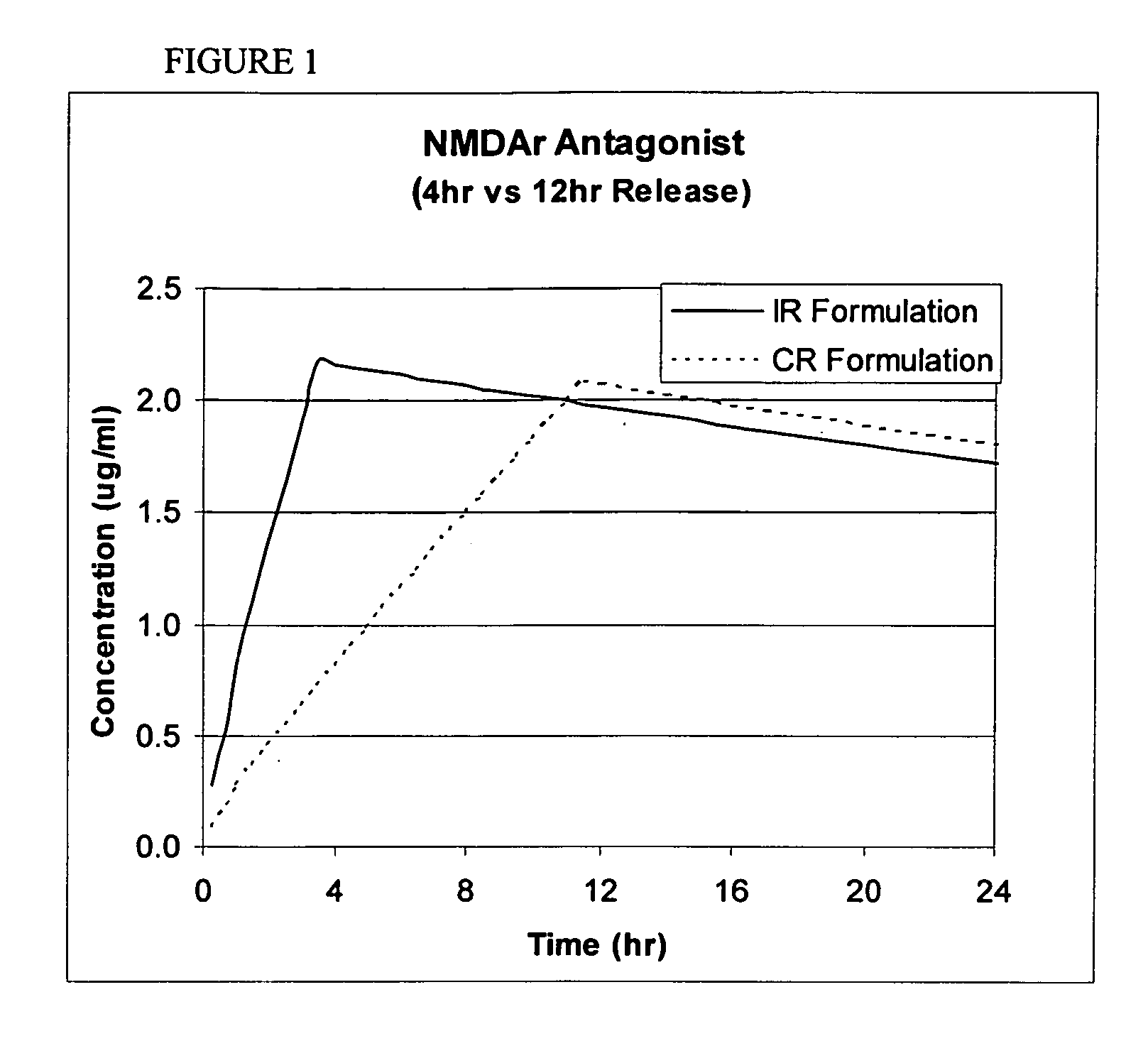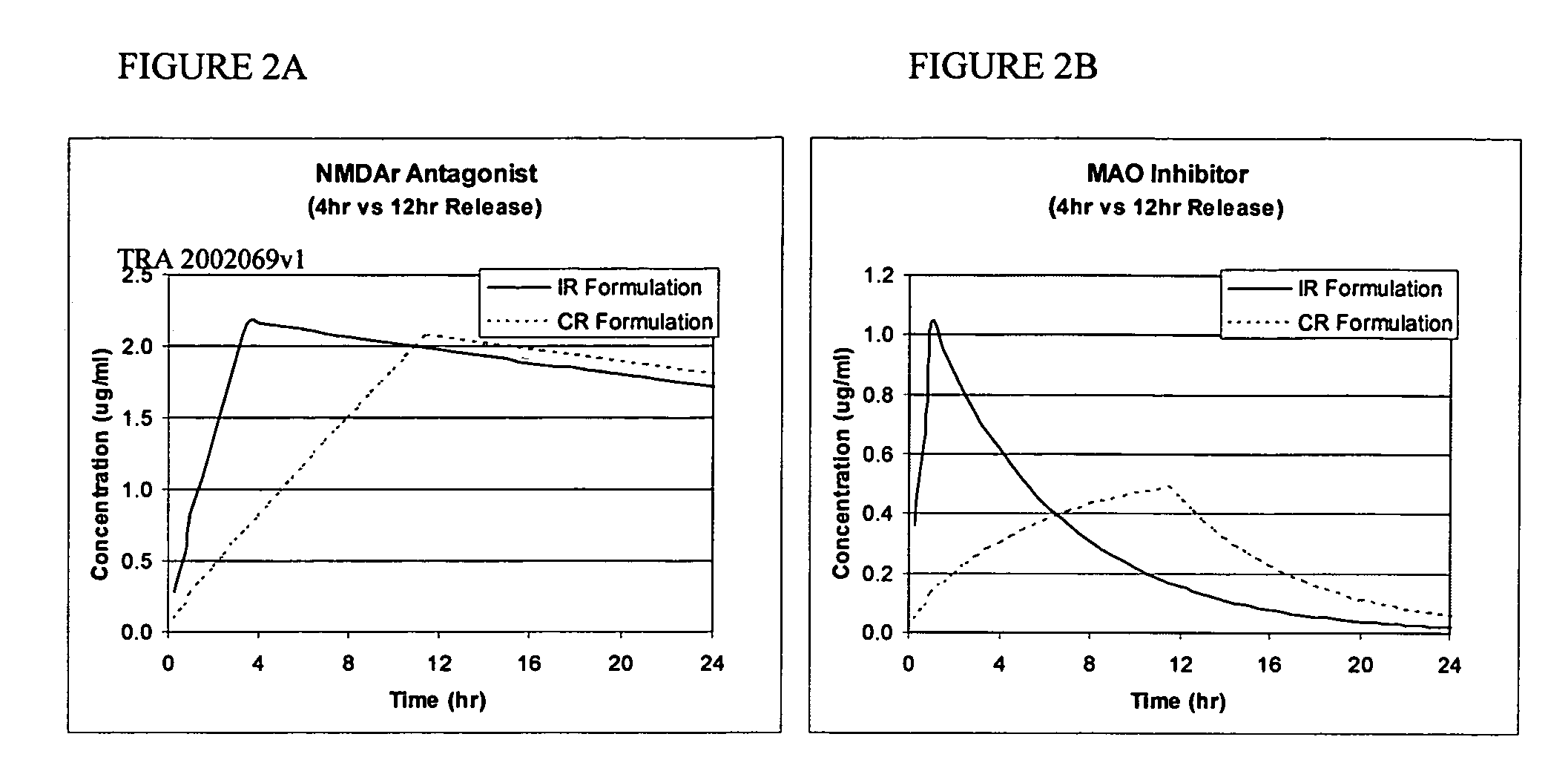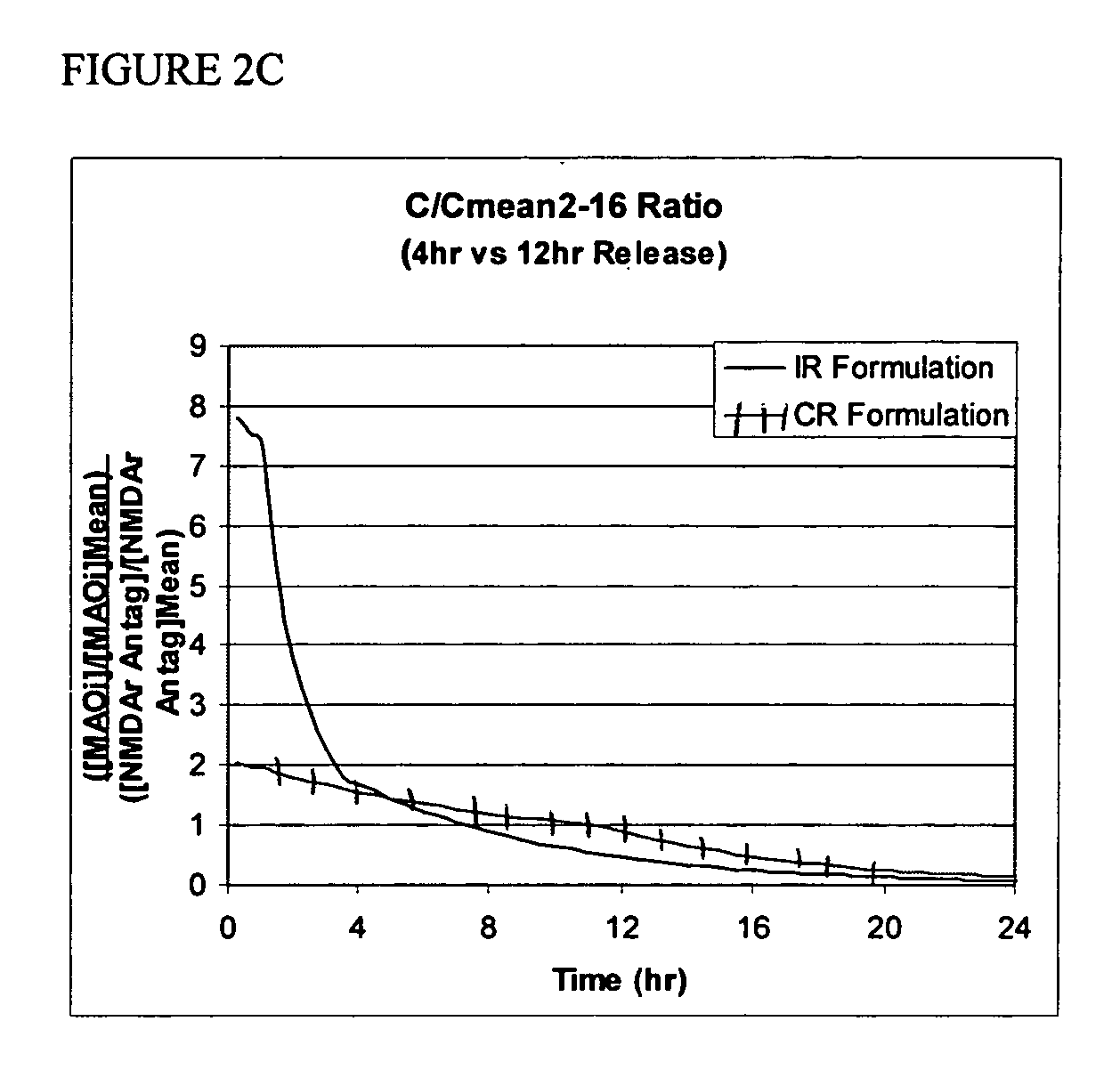Methods and compositions for the treatment of CNS-related conditions
a technology for cns and compositions, applied in the field of compositions and methods for treating cnsrelated conditions, can solve problems such as limiting their use, and achieve the effects of reducing adverse events, reducing apoptosis, and reducing intracellular free radical damag
- Summary
- Abstract
- Description
- Claims
- Application Information
AI Technical Summary
Benefits of technology
Problems solved by technology
Method used
Image
Examples
example 1
In Vitro Method for Determining Optimal Synergy
[0070] We employ the protocol described in Parsons (Parsons, C G et al. Neuropharmacology 38: 85-108, 1999) and Weller (Weller et al., Brain Research 613: 143-148, 1993) for this purpose. Briefly, 13-14-day primary cultures of embryonic rat cortices are seeded onto 11 mm wells Cultures are kept at 37° C. in 95% air / 5% CO2. In order to decrease the number of non-neuronal cells, the antimitotic cytosine arabinoside (araC) is used at 10−6 M starting on the third day of culture during 3 days. Just prior to glutamate treatment, the culture medium is replaced with HEPES-buffered control salt solution pH 7.4 (HCSS). Cells are incubated with 1 mM glutamate plus test compound or the reference compound, MK-801. After a 10 min period of incubation at room temperature, this solution is removed and replaced by serum-free MEM with plus test compound or the reference compound, and the cells are re-incubated at 37° C. for 24 h under standard condition...
example 2
In Vivo Method for Determining Optimal Steady-State Concentration Ratio (Cratio,ss)
[0072] The optimal steady state concentration is determined with the MPTP model of PD (Fredriksson A, Danysz W, Quack G and Archer T. 2001. J. Neural Transm 108: 167-187), but any relevant CNS model may be used for this purpose. Briefly, mice are injected sc with MPTP, 80 mg / kg every 24 hrs for 8-9 weeks to establish stable Parkinsonian syndrome. Animals are treated with L-dopa, 20 mg / kg sc, everyday for 5 days / week for 5 weeks. L-dopa-tolerant MPTP mice are administered test compound or saline before being placed in an activity test chamber. The mice are then injected with L-dopa or saline and motor activity is scored over 3 hours.
[0073] A dose ranging study is performed first on memantine to determine the ED 50, expected in the range of 1-10 um. The ED50 for 1-deprenyl is determined in a similar manner. An isobolic experiment ensues where the drugs are combined in fractions of their EDXXs to add u...
example 3
Combinations of an NMDA Receptor Antagonist and an MOA Inhibitor
[0074] Representative combination ranges are provided below for compositions of the invention.
[0075] Adult Dosage for Combination Therapy
NMDA drugMAO inhibitor or GAPDHai (mg / day)mg / dayLDeprenyl / SelegilineDesmethyl DeprenylRasagilineMemantine / 0.5-100.5-100.5-2.02.5-40Amantadine / 0.5-100.5-100.5-2.0 50-300Rimantadine / 0.5-100.5-100.5-2.0 50-200
PUM
| Property | Measurement | Unit |
|---|---|---|
| Fraction | aaaaa | aaaaa |
| Fraction | aaaaa | aaaaa |
| Fraction | aaaaa | aaaaa |
Abstract
Description
Claims
Application Information
 Login to View More
Login to View More - R&D
- Intellectual Property
- Life Sciences
- Materials
- Tech Scout
- Unparalleled Data Quality
- Higher Quality Content
- 60% Fewer Hallucinations
Browse by: Latest US Patents, China's latest patents, Technical Efficacy Thesaurus, Application Domain, Technology Topic, Popular Technical Reports.
© 2025 PatSnap. All rights reserved.Legal|Privacy policy|Modern Slavery Act Transparency Statement|Sitemap|About US| Contact US: help@patsnap.com



